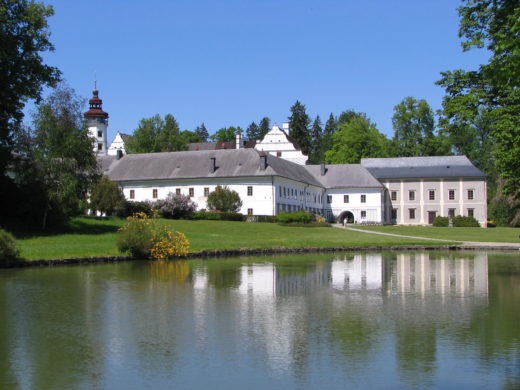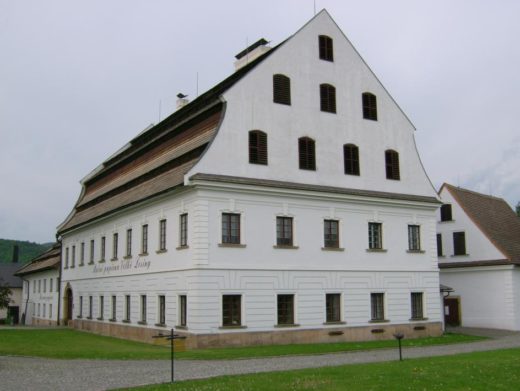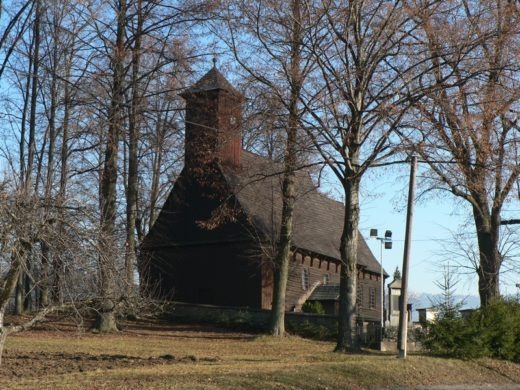If there is something history teaches us, it’s that, for many various reasons, the past should not be romanticized. Sure, it has given us a lot of awesome things like castles, beautiful art, and so on, but in many ways, it can also be the source of nightmares. Even places that look like they are from a fairy tale can have a very dark past. That’s also the case of Velké Losiny – a picturesque village located near the city of Olomouc. At first glance, it looks charming but don’t let the village fool you by its cute exterior – it has quite a story to tell!
What Is the Story of Velké Losiny?
What makes Velké Losiny different from other places in the Czech Republic, is its tragic past. Of course, many places have a tragic past, but the village is unique as it was the centre of the 17th century witch hunts in the area of today’s Czech Republic. You see, the inhabitants of the lands of the Bohemian Crown (Moravia among them) weren’t nearly as enthusiastic about burning innocent people at stakes as, for example, Spaniards with their infamous inquisition (that nobody expects). Witch hunts were, therefore, a rarity in the lands of the Bohemian Crown. The only recorded case of mass witch hunts happened in the Jeseníky and the Šumberk Regions, the latter being where Velké Losiny is located.
But first things first. It all started in 1622 – Europe was being ravaged by the Thirty Years War and in the Jeseníky Region domestic animals were dying of murrain. The situation was bad and as it usually goes in such cases, people started looking for a cause. Back then, however, such catastrophes were often explained as the work of the devil and since the devil doesn’t come alone, someone’s curse had to be the original cause. Soon there was someone to blame – a local dying shepherd claimed on his deathbed that his wife Barbora Schmied made him ill, didn’t feed him well and that she cast a spell on the cattle in the area. Legend also has it that Barbora was very beautiful and a lot of local men would look at her longingly, which made her husband jealous. Anyway, she was immediately arrested and interrogated. She denied all the accusations even when the inquisitors threatened to use torture devices. And so they used them. After a while, she confessed and under the pressure from the inquisitors, she accused other people she knew. And that was just the beginning of 80 years of terror.
So what does Velké Losiny have to do with that? It took a few decades but eventually, the witch-hunt arrived in the village too. It started when a beggar Marina Schuch decided to steal a Host at a church. She went to the church and once the Host was laid onto her tongue, she tried to inconspicuously take it out from her mouth. The poor woman was, however, noticed by a young altar boy, who immediately told the church’s priest. The priest then informed Countess Galle, who did not hesitate to call up Heinrich Franz Boblig von Edelstadt – the famous local inquisitor. The beggar was then arrested and during the subsequent interrogation, she confessed that she stole the Host for the local midwife Dorota Groer, who had previously complained that her cow didn’t give enough milk. The host was supposed to heal the cow. To us, it may sound quite innocent, though a bit silly, but the people of the time would classify this as witchcraft. After all, who would steal a Host but someone who intended to desecrate it by using it for dark rituals, correct? Anyway, you can probably imagine what this all led to – more people being accused (including three priests), more people being tortured and more people burning at stakes. One of the victims was even the owner of the local paper factory’s wife – Mrs Goetlicher. As you can see, the witch trials had mostly nothing to do with “saving humanity from evil witches”, but it was done for profit. Fortunately for the local people, the witch hunt, eventually, stopped when the brothers Jáchym and Maxmilián of Žerotín reached adulthood and seized power from their governess and aunt – Countess Galle. The Witch trials took place in the years 1678–1692 and cost the lives of 56 people.
And a little “fun” fact: Did you know that the alleged witches in Salem were not burned at stakes but hanged?
Visit the Beautiful Château
The place whose history is the most connected with the witch hunt in Velké Losiny is certainly the château. Despite its dark past, it’s actually very beautiful – one of the best examples of Renaissance architecture in the Czech Republic. It’s probably no surprise at all that it was the Žerotín family, who built the château (finished in 1589) in the place of a derelict fortress as it was them who turned an old castle in Moravská Třebová into the Renaissance château it is now. They owned Velké Losiny for over 300 years. Unfortunately, they eventually went bankrupt and had to sell their possessions, which included the village of Velké Losiny as well. That’s how the château and the whole area was acquired by the Liechtenstein family – one of the richest and most important dynasties in the whole of Moravia. They immediately renovated the baroque garden, which they turned into an extensive park in the 19th century.
The Liechtenstein family, eventually, moved some of the furniture to other estates, particularly Lednice and Valtice, but you can still find many beautiful tapestries, original leather wallpapers and furniture there. After WWII, in 1945, the Liechtenstein family, who considered themselves German, lost all of their possessions in the Czech Republic, including the château and other buildings in Velké Losiny. It became the property of the state.
By the way, many movies were filmed here at the château – for example, a Canadian movie “Carmen”, some movie scenes for the movie “Bathory” or the famous Czech movie “Kladivo na čarodějnice” (“Witchhammer”), that captures the witch trials that took place here.

Paper Mill
Another place whose past is connected to the witch hunt in the 17th century is the local paper factory, whose owner’s wife, as I mentioned before, fell victim to the witch trials.
It was established by the Žerotín family in a several storeys high Renaissance building in the late 16th century, which makes it the oldest paper factory in Central Europe. Not only that – but it has also been continually operating ever since then. The paper produced here is made by hand and it’s known all over the world.
Nowadays, the paper factory is also home to a museum that presents the history of paper-making.

Relax in the local spa
While this place is mostly famous because of the witch trials, Velké Losiny is also a spa village. The spa was first mentioned in 1562 when the owner of the estate, Jan Younger of Žerotín, allegedly had a new house built next to the already existing wooden spa building. In the 19th century, the spa underwent great renovations thanks to the Liechtenstein family. Throughout history, the spa served many purposes – for example, during the WWI it was used as an infirmary.
The water in the local sulphur springs has the temperature of 36 – 37 °C and is slightly radioactive, but despite that it’s very beneficial for people’s health thanks to the high concentration of sulphur. There are six hot springs in total. By the way, one of them is named “Žerotín” to honour the Žerotín dynasty and another one is named “Marie Terezie” after Empress Maria Theresa.
The place is perfect for those who really want to take a break from all the witch trials. The spa didn’t exactly prosper during that time but I cannot recall a single story of anyone related to the place being tortured and burned at a stake.
Other places to visit
If you’d like to see even more of Velké Losiny, there are several other places worth visiting. You can, for example, take a stroll around Žárová – an administrative part of the Velké Losiny village. Here you can visit the beautiful wooden church of St. Martin which was built in 1610 by Jan Jetřich of Žerotín. It’s situated in the middle of a small cemetery, so if you like a spooky atmosphere, I recommend you to wait a bit and visit it in autumn, around the All Saints’ Day. Another beautiful wooden church is located in Maršíkov – also an administrative part of Velké Losiny. Its name is the church of St. Michael and it is the oldest preserved folk building in northern Moravia.

Those of you who like nature and prefer adventure over relaxing in the local spa can take a walk to a nearby lookout tower Bukovka located about 4 kilometres from Velké Losiny.
If you’re a curious person who likes travelling, keep an eye on our blog to learn more about these interesting places! If you don’t want to check the blog for more tips for trips, just subscribe to our special newsletter or follow us on Facebook and Instagram!
